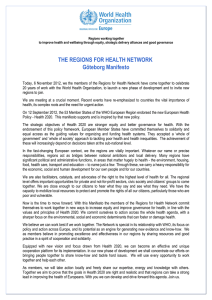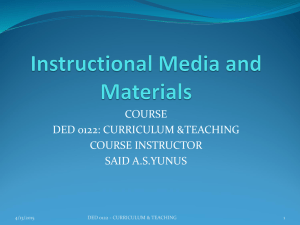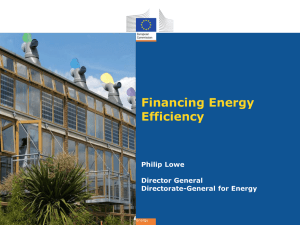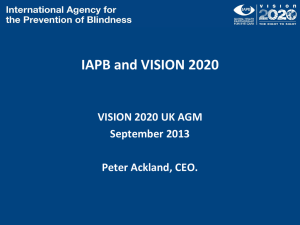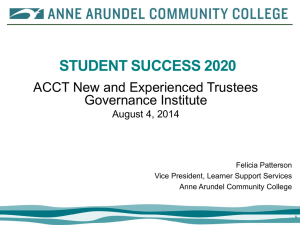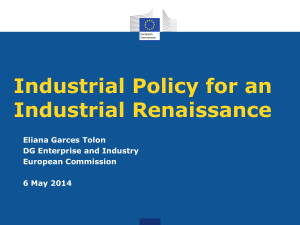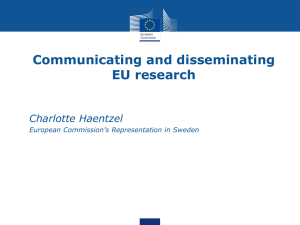The Curriculum: models
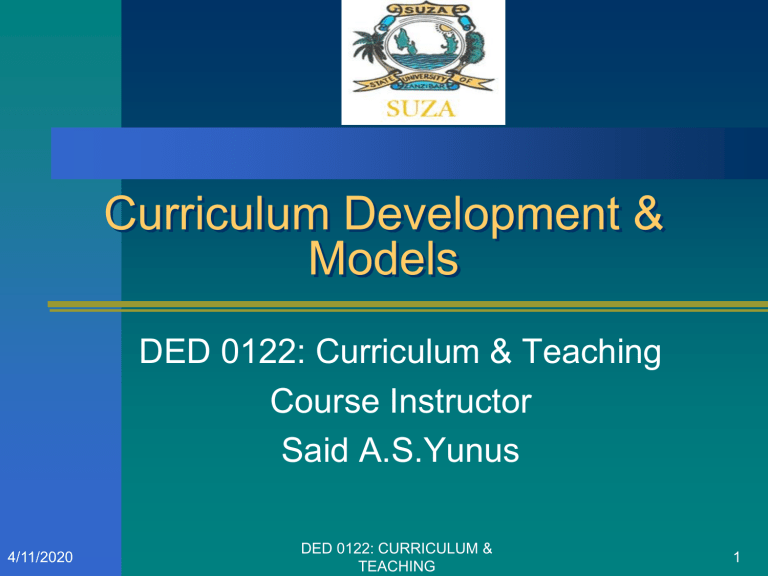
4/11/2020
Curriculum Development &
Models
DED 0122: Curriculum & Teaching
Course Instructor
Said A.S.Yunus
DED 0122: CURRICULUM &
TEACHING
1
4/11/2020
Objectives
At the end of this lecture, student should be able to:
1.
Define curriculum development
2.
Define the concept of model
3.
Identify types of curriculum development models
DED 0122: CURRICULUM &
TEACHING
2
What is curriculum development?
4/11/2020
Curriculum development is the organized preparation of whatever is going to be taught in schools at a given time in a given year.
They are made into official documents, as guides for teachers, and made obligatory by provincial and territorial departments
DED 0122: CURRICULUM &
TEACHING
3
What is curriculum development?
Curriculum Development can be defined as the systematic planning of what is taught and learned in schools as reflected in courses of study and school programs.
These curricula are embodied in official documents (typically curriculum "guides" for teachers) and made mandatory by provincial and territorial departments of education
4/11/2020
DED 0122: CURRICULUM &
TEACHING
4
What is curriculum development?
Curriculum development is the process of setting up and establishing specific guidelines of instruction for the curriculum.
4/11/2020
DED 0122: CURRICULUM &
TEACHING
5
The Curriculum: models
4/11/2020
DED 0122: CURRICULUM &
TEACHING
6
4/11/2020
Curriculum models
Model:
Definition:
A simplified representation of reality which is often depicted in diagrammatic form
DED 0122: CURRICULUM &
TEACHING
7
4/11/2020
Curriculum models
Model:
Purpose:
To provide a structure for examining the elements that go to make up curriculum planning, and how these elements interrelate.
DED 0122: CURRICULUM &
TEACHING
8
4/11/2020
Curriculum models
Model:
The literature in the area of curriculum has accepted the use of the term
‘model’ to explain both the nature and the process of curriculum development.
DED 0122: CURRICULUM &
TEACHING
9
4/11/2020
Curriculum models
Models are used to explain:
levels of curriculum
aspects of organization practice
aspects of classroom instruction
types of decision making
DED 0122: CURRICULUM &
TEACHING
10
Curriculum models
Are designed to provide a basis for decisions regarding the selection , structuring and sequencing of the educational experiences
4/11/2020
DED 0122: CURRICULUM &
TEACHING
11
4/11/2020
The curriculum process
The development of a curriculum involves the developer in decisions about the nature and appropriateness of the substantive
(basic) elements, e.g. the
Outcomes
Content
method
assessment strategies
These decisions are made in relation to the
context in which the curriculum will operate.
DED 0122: CURRICULUM &
TEACHING
12
4/11/2020
Types of curriculum models
Rational/objectives models
Cyclical models
Dynamic/interaction models
DED 0122: CURRICULUM &
TEACHING
13
4/11/2020
A continuum of curriculum models
Rational/objectives models:
Ralph Tyler
Hilda Taba
DED 0122: CURRICULUM &
TEACHING
14
4/11/2020
A continuum of curriculum models
Cyclical models:
Wheeler
Nichols
DED 0122: CURRICULUM &
TEACHING
15
4/11/2020
A continuum of curriculum models
Dynamic/interaction models :
Walker
Skilbeck
DED 0122: CURRICULUM &
TEACHING
16
Ralph Tyler's Model/Rationale
4/11/2020
Ralph Tyler considered four considerations in curriculum development:
1.
purposes of the school
2.
educational experiences related to the purposes
3.
organization of the experiences
4.
evaluation of the experiences
DED 0122: CURRICULUM &
TEACHING
17
4/11/2020
DED 0122: CURRICULUM &
TEACHING
18
4/11/2020
Hilda Taba's Linear Model
Hilda Taba believed that teachers who teach or implement the curriculum should participate in developing it.
Her advocacy was commonly called the
"grassroots approach" where teachers could have a major input.
She presented seven major steps:
DED 0122: CURRICULUM &
TEACHING
19
4/11/2020
Hilda Taba's Linear Model
1.
2.
Diagnosis of needs. The teacher
(curriculum designer) starts the process by identifying the needs of the students for whom the curriculum is to be planned
Formulation of learning objectives. After the teacher has identified the needs that require attention, he or she specifies objectives to be accomplished.
DED 0122: CURRICULUM &
TEACHING
20
Hilda Taba's Linear Model
4/11/2020
3.
Selection of learning content. The objectives selected or created suggest the subject matter or content of the curriculum. Not only should objectives and content match but also the validity and significance of the content chosen needs to be determined.
4.
.
Organization of learning content. A teacher can not just select content, but must organize it in some type of sequence, taking into consideration the maturity of the learners, their academic achievement, and their interests.
DED 0122: CURRICULUM &
TEACHING
21
4/11/2020
5.
6.
Hilda Taba's Linear Model
Selection of learning experiences. Content must be presented to pupils and pupils must engage the content. At this point, the teacher select instructional methods that will involve students with the content.
Organization of learning activities. Just as content must be sequenced and organized, so must the learning activities. Often the sequence of the learning activities is determined by the content. But the teacher needs to keep in mind the particular students whom he or she will be teaching.
DED 0122: CURRICULUM &
TEACHING
22
4/11/2020
Hilda Taba's Linear Model
7.
Evaluation and means of evaluation.
The curriculum planner must determine just what objectives have been accomplished. Evaluation procedures need to be considered by the students and teachers.
DED 0122: CURRICULUM &
TEACHING
23
Curriculum Development
4/11/2020
Some curriculum experts like Tyler say that the steps are followed in a sequence or a straight line.
1
2
This model that assumes that
3 curriculum decision making follows a
4 straight line is called linear model
DED 0122: CURRICULUM &
TEACHING
• Selection of Aims
• Selection of Content &
Learning Experiences
• Organization of content & Learning
Experiences
• Evaluation of Learning outcomes
24
Curriculum Development
4/11/2020
Other scholars argue that curriculum decision making is not a simple linear process that necessarily starts with aims.
Evaluation
One of them is Wheeler
(1978) who believes that curriculum decision making can start from any
Organisation &
Integration of
Learning
Experiences &
Content point and can come back to any of the points e.g. like a cycle
DED 0122: CURRICULUM &
TEACHING
Selection of
Content
Aims, Goals
& Objectives
Selection of
Learning
Experiences
25
Curriculum Development
4/11/2020
Kerr (1968) also believes that curriculum process is a very complex set of activities and decisions and they interact a lot.
Changes made in content may necessitate changes in experiences, which
Evaluation may again bring about changes in evaluation etc.
DED 0122: CURRICULUM &
TEACHING
Objective
Learning
Experience
Content
26
4/11/2020
Evaluation
What was useful?
What was not so useful?
What needs to be Changed?
DED 0122: CURRICULUM &
TEACHING
27
THANK YOU FOR LISTENING
4/11/2020
DED 0122: CURRICULUM &
TEACHING
28

